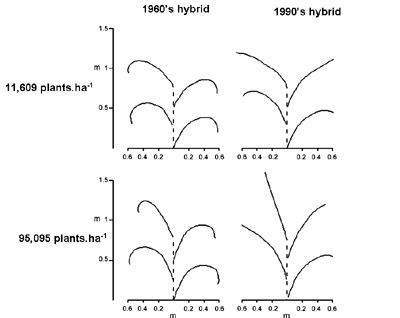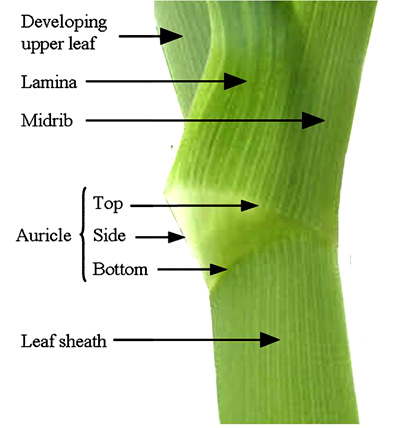Recent work has been conducted in collaboration with Professor Elizabeth Van Volkenburgh and her Leaf Growth Lab in the Department of Biology, University of Washington. It has long been known through artificial experimental manipulation (see Introduction) that foliage angle can affect productivity. An important trend in the development of higher yielding maize hybrids has been increasingly upright leaves and use of higher planting densities. We examined the curvature of maize leaves and defined the more upright leaves of a 1990s hybrid compared with hybrids from earlier decades. Not only were leaves of the recent variety more upright but they showed greater plastic increase as plants were planted closer together.

Vertical midrib profiles for a 1960's hybrid (left) and 1990's hybrid (right) grown at low (top) and high (bottom) planting densities. Not only are leaves more upright in the 1990's hybrid but their increase in uprightness is greater at the higher planting density.

We found no consistent differences in the size or structure of the leaf mid-rib between hybrids that would explain differences in curvature. However there were differences in the structure of leaf auricles, triangular-shaped tissue at the junction between leaf and leaf sheath. Each leaf has a pair of auricles, one on each side of the stem, with their sides facing in the same direction. Leaves of the 1990's hybrid had smaller auricle angles. They were also lighter, partly because they were narrower, and their torque was less so that less leaf deflection would occur.